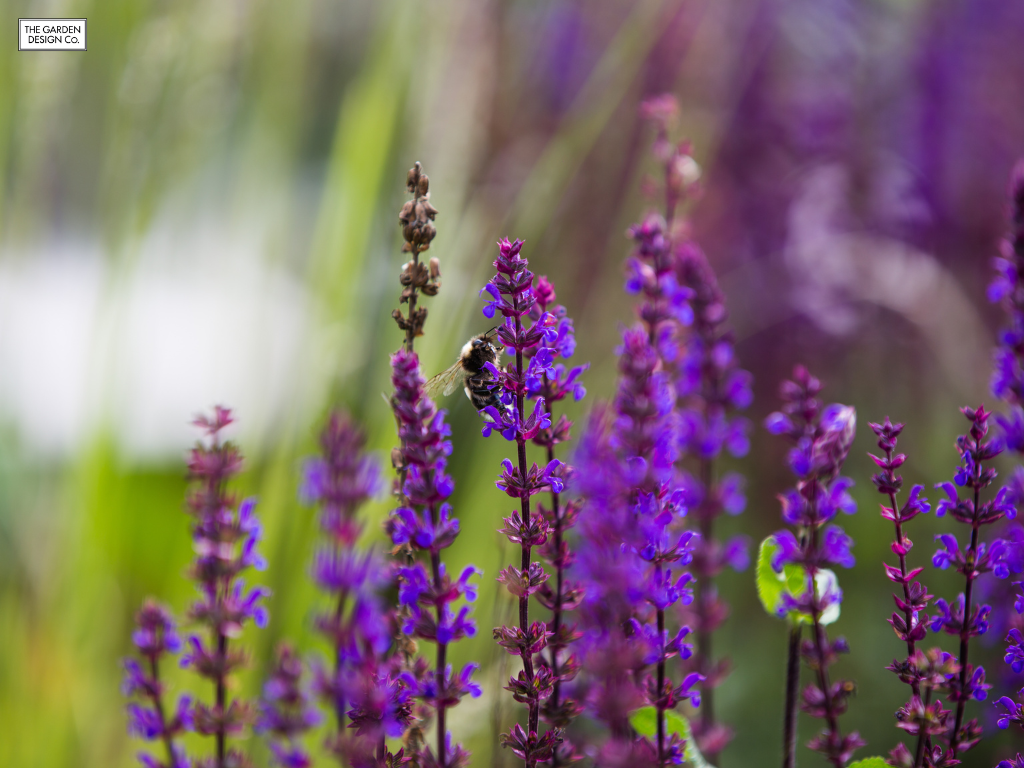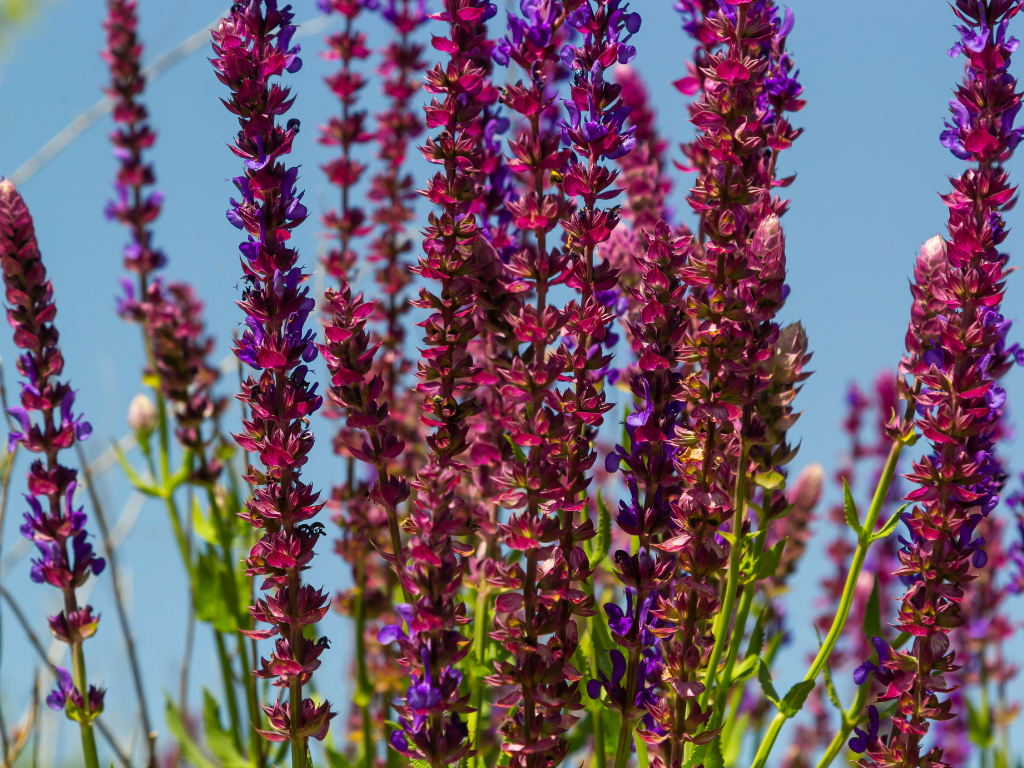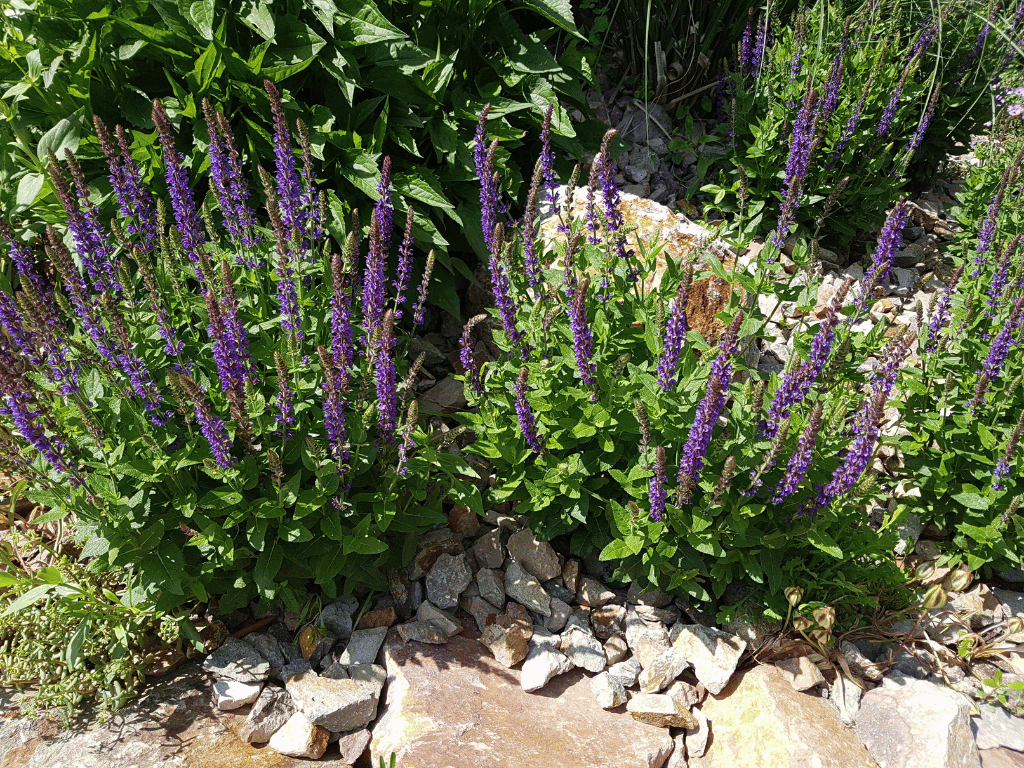Ditch the Autumn Prune


Salvia Nemorosa ‘Caradonna’ is a beautiful and popular perennial plant that can add a touch of elegance to any garden. In order to fully appreciate and care for this plant, it is important to have a good understanding of its origins, distinctive features, ideal growing conditions, lifecycle, and potential pests and diseases. This article will guide you through everything you need to know about Salvia Nemorosa ‘Caradonna’, enabling you to cultivate and enjoy a flourishing garden.
Salvia Nemorosa ‘Caradonna’ belongs to the botanical family Lamiaceae and the genus Salvia. As a member of the mint family, this plant shares certain characteristics with its relatives, such as the square-shaped stems and aromatic leaves. Native to the Mediterranean region, Salvia Nemorosa can be found growing in various countries, including Spain, Greece, and Turkey. It thrives in areas with well-draining soil and ample sunlight.
Salvia Nemorosa ‘Caradonna’ is a cultivar known for its striking deep purple flowers that bloom on tall, slender spikes. The name ‘Caradonna’ is derived from its breeder, Ernst Pagels, who introduced this cultivar in the late 20th century. This particular variety is prized by gardeners for its long-lasting blooms and its ability to attract pollinators like bees and butterflies.
Belonging to the Lamiaceae family, which is commonly referred to as the mint family, Salvia Nemorosa ‘Caradonna’ is a distant relative of other well-known culinary and ornamental plants like basil and lavender. Its genus, Salvia, comprises a vast number of species, some of which are highly valued for their medicinal properties.
Within the genus Salvia, ‘Caradonna’ stands out for its unique combination of ornamental beauty and resilience. The plant’s foliage, with its silvery-green hue, provides an attractive contrast to the vibrant purple flowers, making it a popular choice for garden borders and herbaceous borders.
Salvia Nemorosa is typically found growing in open grasslands, rocky hillsides, and meadows. Its natural habitat ranges from the eastern part of the Mediterranean to central Europe. This plant has adapted to various soil types, from sandy to loamy, and it can tolerate both acidic and alkaline conditions. However, it thrives best in well-drained soil and prefers full sun exposure.
In its native habitats, Salvia Nemorosa plays a vital role in supporting local ecosystems by providing nectar for pollinators and shelter for small wildlife. The plant’s ability to thrive in diverse environmental conditions has made it a resilient species that can withstand fluctuations in temperature and rainfall patterns.

Salvia Nemorosa ‘Caradonna’ stands out with its unique features, making it fairly easy to identify among other plants. Its distinct square stems are covered in dark green, lance-shaped leaves. The leaves have an aromatic scent when crushed, giving off an earthy fragrance. However, the real showstopper is the vivid violet-blue flowers that appear on tall spikes throughout the summer.
The most noticeable feature of Salvia Nemorosa ‘Caradonna’ is its striking flower spikes. These spikes can reach heights of up to 2 feet, adding vertical interest to any garden. The flowers themselves are tubular in shape and arranged in whorls around the stems. Their vibrant violet-blue colour contrasts beautifully with the dark green leaves, creating a visually stunning display when planted en masse.
The flowers of Salvia Nemorosa ‘Caradonna’ are a vivid shade of violet-blue, creating a mesmerising effect in the garden. The tubular shape of the flowers, combined with their arrangement in whorls, gives them a distinctive and elegant appearance. These striking flowers are not only visually appealing but also attract pollinators such as butterflies and bees.
Salvia Nemorosa ‘Caradonna’ is a hardy perennial plant that thrives in well-drained soil and full sunlight. Originating from Europe, this cultivar is known for its tolerance to drought conditions, making it a popular choice for xeriscaping projects. The plant’s ability to attract pollinators also makes it a valuable addition to wildlife-friendly gardens, supporting biodiversity.
To ensure the best performance from Salvia Nemorosa ‘Caradonna’, it is recommended to plant it in soil that is not overly rich or moist. This plant prefers a sandy or gravelly soil that drains well, mimicking its natural habitat in dry meadows and rocky slopes. While ‘Caradonna’ can tolerate some shade, it thrives in full sunlight, which intensifies the colour of its flowers and promotes robust growth.

To cultivate healthy and thriving Salvia Nemorosa ‘Caradonna’ plants in your garden, it is crucial to provide them with the right growing conditions.
‘Caradonna’ prefers well-drained soil, so make sure to amend heavy or clay soil with organic matter to improve drainage. This plant thrives in full sun but can tolerate partial shade. However, it is essential to note that inadequate sunlight may lead to floppy growth and reduced flower production.
When selecting a location for your Salvia Nemorosa ‘Caradonna’ plants, consider planting them in a spot with good air circulation to prevent issues such as powdery mildew, a common fungal disease that can affect salvias in humid conditions.
Salvia Nemorosa ‘Caradonna’ is relatively low-maintenance when it comes to watering. Once established, it is drought-tolerant and does not require frequent watering. However, during prolonged dry spells, water the plants deeply to ensure the roots receive adequate moisture. Avoid overwatering, as this can lead to root rot. As for fertilising, a moderate application of balanced organic fertiliser in spring is sufficient to support healthy growth and abundant blooms.
Deadheading spent flowers not only keeps your ‘Caradonna’ looking tidy but also encourages the plant to produce more blooms, prolonging the flowering period throughout the season. Additionally, dividing mature clumps every few years in early spring can help rejuvenate the plants and promote vigorous growth.
Understanding the lifecycle of Salvia Nemorosa ‘Caradonna’ is essential for proper care and maintenance.
Salvia Nemorosa ‘Caradonna’ can be propagated from both seeds and cuttings. If starting from seeds, sow them indoors 8-10 weeks before the last frost date or directly outdoors after the danger of frost has passed. It usually takes around 14-21 days for the seeds to germinate. Once the seedlings are a few inches tall, they can be transplanted into their final location in the garden.
Alternatively, taking stem cuttings in late spring or early summer is another method of propagating ‘Caradonna’. Select a healthy stem with no flowers and root it in a well-draining potting mix. With proper care and attention, the cutting will develop roots and grow into a new plant, ready to be transferred to the garden.
The vibrant flowers of Salvia Nemorosa ‘Caradonna’ grace the garden from early summer to fall, delighting gardeners with their vibrant colour and attracting pollinators. Regular deadheading of faded flowers throughout the season can encourage continued blooming and maintain a neat appearance.
It is important to note that ‘Caradonna’ is a relatively low-maintenance plant once established. It thrives in well-draining soil and full sun but can tolerate partial shade. Regular watering, especially during dry spells, and occasional fertilisation will keep this perennial blooming year after year, providing a beautiful spectacle in any garden setting.

While Salvia Nemorosa ‘Caradonna’ is generally a hardy plant, it can still be susceptible to certain pests and diseases.
Aphids and spider mites can infest Salvia Nemorosa ‘Caradonna’, causing damage to the leaves and stems. Regular inspection and early detection of these pests are important for effective control. Using a strong jet of water or introducing natural predators can help combat aphid and spider mite infestations.
Another common pest that can trouble ‘Caradonna’ plants is the whitefly. These tiny insects feed on the sap of the plant, weakening it and potentially transmitting viral diseases. To deter whiteflies, you can use reflective mulch or sticky traps to disrupt their feeding habits.
One of the most common diseases affecting Salvia Nemorosa ‘Caradonna’ is powdery mildew. To prevent this fungal disease, ensure proper air circulation around the plants by providing adequate spacing and pruning. If powdery mildew does occur, treat it with an appropriate fungicide. It is also crucial to avoid overwatering, as moist conditions can promote fungal growth.
Additionally, ‘Caradonna’ plants can be susceptible to root rot if grown in poorly draining soil. To prevent this, incorporate organic matter into the soil to improve drainage and avoid waterlogged conditions that can lead to root rot. Regularly inspect the roots for any signs of decay and adjust watering practices accordingly.
Now armed with knowledge about Salvia Nemorosa ‘Caradonna’, you can confidently introduce this stunning plant to your garden. By providing optimal care and the right growing conditions, you can enjoy the beauty of ‘Caradonna’ for years to come.